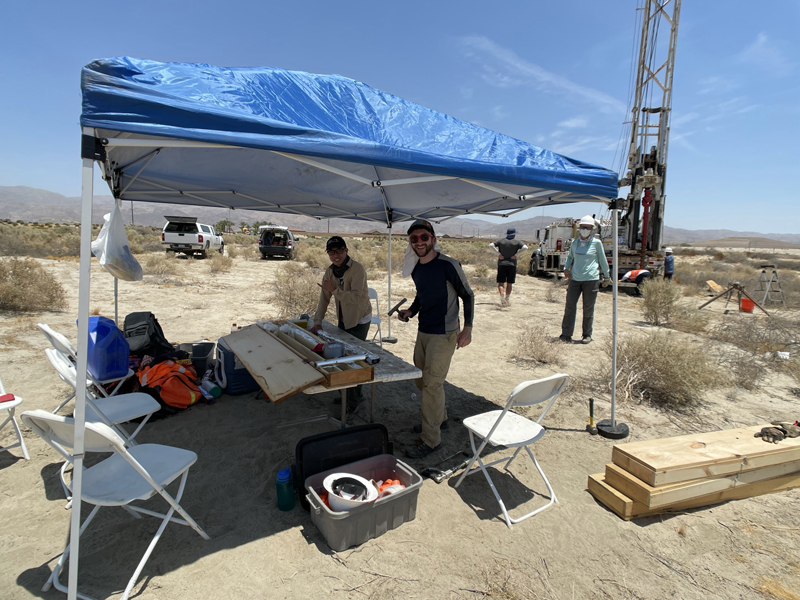22 April 2022–Sediment cores from the ancient Lake Cahuilla at Coachella in southern California could help seismologists determine whether lake filling events are connected to earthquakes on the Southern San Andreas Fault, according to a presentation at the Seismological Society of America’s Annual Meeting.
Lake Cahuilla was a prehistoric lake in California and northern Mexico that covered more than 2000 square miles in the Coachella and Imperial valleys, in the same region as the Southern San Andreas Fault. Today’s Salton Sea occupies part of the original lake footprint.
Sediment layers in two cores, dated with a technique called single-grain luminescence, now extend the lake level history back to about 7000 years, from the previous record of about 2000 years, said Sourav Saha of the Kentucky Geological Survey, University of Kentucky.
Recent paleoseismology studies along the Southern San Andreas Fault suggest that the last seven major ruptures on the fault have occurred at intervals between 116 to 221 years. However, the most recent earthquake in the Lake Cahuilla region occurred about 300 years ago, at the last time the lake was filled. “One of our goals is to see whether there is any relationship between fluctuations in the lake and the activation of the Southern San Andreas Fault,” Saha said.

Some geophysicists think that past fault ruptures might be linked to stages of lake filling, he explained. The increase in pore pressure that could result from lake filling “would most likely reactivate smaller normal faults along the Salton Sea stepover zone, and Coulomb stress models indicate that if you reactivate those extensional faults, it is very likely that you don’t need much to reactivate the Southern San Andreas Fault.”
Before seismologists can evaluate this possible triggering mechanism, they need a more complete and detailed history of the lake itself. The 35 to 40-meter-long cores dated and analyzed by Saha and his colleagues are providing valuable data about this history.
The research team is using single-grain luminescence, a dating technique that measures when a mineral grain such as feldspar was last exposed to sunlight, to carefully trace the history of sediment deposition in the lake. The technique allows them to evaluate some of the assumptions paleoseismologists make in tracing past earthquakes, Saha said.
“Usually, paleoseismologists assume that places with high sedimentation rates would likely preserve older rupture events in much more detail than areas with lower sedimentation rates, but that hypothesis has never been tested,” he explained. Single-grain luminescence dating allows researchers to shed some light on this aspect by offering additional details of in-between earthquake events, such as “pulses” of sedimentation that might be related to changes in climate or tectonic activity.
Two lake cores of the ancient Lake Cahuilla offer an extended history of lake fluctuations. However, they are insufficient to reconstruct past earthquake rupture history. Subtle changes in the grain size of the sediments suggest that the lake had a more complicated sedimentation history than previously thought, making it a little more difficult to distinguish lake from non-lake layers.
Saha said the research team is planning to extract more cores and use a survey technique called cone penetration testing (CPT) to reveal more vertical layers and horizontal extent of those layers to better distinguish lake and non-lake layers and look for complete evidence of past earthquakes.
